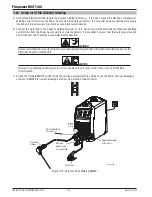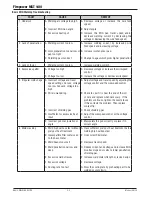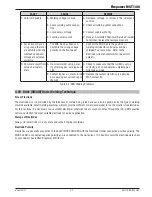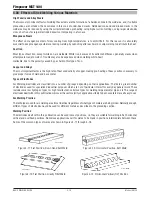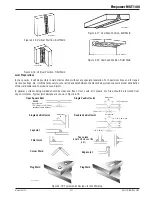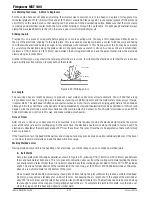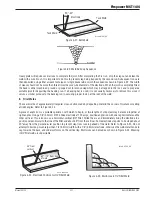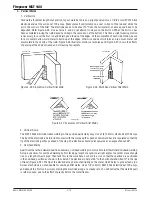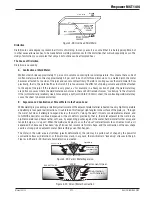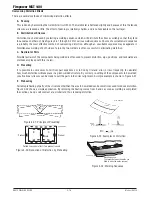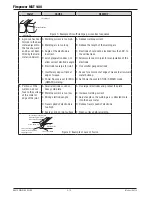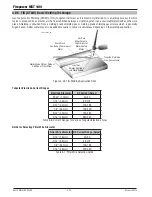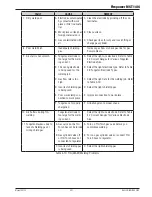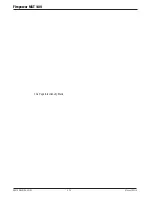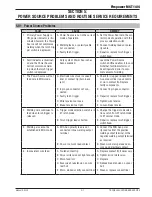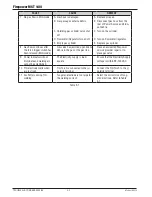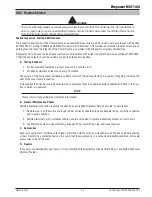
Firepower MST 140i
Manual 0-5338
4-13
BASIC WELDING GUIDE
Art # A-07699_AB
45° from
vertical
60° - 70° from line
of weld
Figure 4-23: Electrode Position for HV Fillet Weld
Art # A-07700_AB
1
2
3
4
5
6
Figure 4-24: Multi-runs in HV Fillet Weld
Art # A-07697_AB
Tack Weld
20°-30°
Electrode
Tack Weld
Figure 4-21: Butt Weld
Art # A-07698
Figure 4-22: Weld Build up Sequence
Heavy plate will require several runs to complete the joint. After completing the first run, chip the slag out and clean the
weld with a wire brush. It is important to do this to prevent slag being trapped by the second run. Subsequent runs are
then deposited using either a weave technique or single beads laid down in the sequence shown in Figure 4-22. The width
of weave should not be more than three times the core wire diameter of the electrode. When the joint is completely filled,
the back is either machined, ground or gouged out to remove slag which may be trapped in the root, and to prepare a
suitable joint for depositing the backing run. If a backing bar is used, it is not usually necessary to remove this, since it
serves a similar purpose to the backing run in securing proper fusion at the root of the weld.
B. Fillet Welds
These are welds of approximately triangular cross-section made by depositing metal in the corner of two faces meeting
at right angles. Refer to Figure 4-14.
A piece of angle iron is a suitable specimen with which to begin, or two lengths of strip steel may be tacked together at
right angles. Using a 1/8"(3.2mm) E7014 Stick electrode at 100 amps, position angle iron with one leg horizontal and the
other vertical. This is known as a horizontal-vertical (HV) fillet. Strike the arc and immediately bring the electrode to a
position perpendicular to the line of the fillet and about 45º from the vertical. Some electrodes require to be sloped about
20º away from the perpendicular position to prevent slag from running ahead of the weld. Refer to Figure 4-23. Do not
attempt to build up much larger than 1/4"(6.4mm)width with a 1/8"(3.2mm) electrode, otherwise the weld metal tends to
sag towards the base, and undercut forms on the vertical leg. Multi-runs can be made as shown in Figure 4-24. Weaving
in HV fillet welds is undesirable.
Summary of Contents for MST 140i
Page 6: ...This Page Intentionally Blank ...
Page 76: ...Firepower MST 140i BASIC WELDING GUIDE 4 24 Manual 0 5338 This Page Intentionally Blank ...
Page 82: ...Firepower MST 140i KEY SPARE PARTS 6 2 Manual 0 5338 6 02 Power Source Art A 12518 31 ...
Page 86: ...Firepower MST 140i KEY SPARE PARTS 6 6 Manual 0 5338 This Page Intentionally Blank ...
Page 87: ...Firepower MST 140i Manual 0 5338 1 APPENDIX APPENDIX This Page Intentionally Blank ...
Page 89: ...Firepower MST 140i Manual 0 5338 3 APPENDIX Art A 12517 ...


